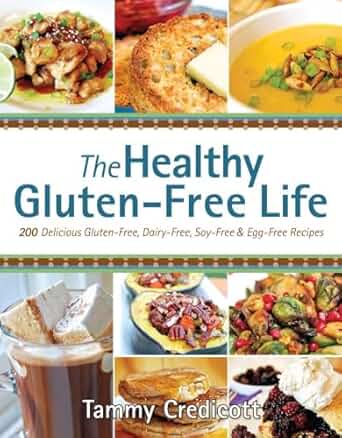The Gluten Free Casein Free Diet:
A Powerful Autism Support Strategy

The gluten free casein free diet (GFCF diet) is rapidly gaining attention as a promising dietary intervention for children with autism spectrum disorder (ASD) and related developmental conditions such as ADHD and sensory processing disorders. By removing gluten (a protein found in wheat, barley, rye) and casein (a protein found in dairy products), many families report noticeable improvements in their child’s behavior, focus, and even language skills.
In this guide, we’ll explore the benefits of the gluten free casein free diet, the scientific theories behind its effectiveness, tips for getting started, and practical resources to help parents navigate this often challenging – but potentially life-changing – dietary change.
What is the Gluten Free Casein Free Diet?
The GFCF diet involves the complete elimination of two proteins: gluten and casein. Gluten is commonly found in wheat-based foods like bread, pasta, and baked goods, while casein is found in milk, cheese, butter, and other dairy products. Many popular children's foods – macaroni and cheese, pizza, grilled cheese sandwiches, and cheeseburgers – are high in both gluten and casein, which can make starting the diet particularly difficult for parents of picky eaters.
Despite the initial challenge, many families that have implemented this biomedical treatment for autism report that the gluten free casein free diet leads to significant improvements in autism symptoms, such as reduced repetitive behaviors, improved communication, and better eye contact.
Why Try a Gluten Free Casein Free Diet for Autism?
1. The Opiate Theory
One of the most well-known explanations for the effectiveness of the GFCF diet is the opiate theory. According to this theory, children with autism often lack adequate levels of a digestive enzyme called DPP4 (dipeptidyl peptidase IV). This enzyme helps break down gluten and casein in the digestive system.
When gluten and casein are not properly digested, they form opioid-like peptides – substances that can affect the brain in ways similar to morphine or heroin. These peptides may cross the blood-brain barrier and bind to opioid receptors, leading to symptoms like:
- Foggy thinking or “zoning out”
- Hyperactivity
- Emotional outbursts
- Difficulty focusing
- Cravings and food obsessions
Removing gluten and casein from the diet can lower the levels of these opioid peptides, potentially lifting the "fog" that some parents describe and improving behavior, awareness, and interaction.
2. The Methylation and Detoxification Theory
Another theory focuses on methylation, a biochemical process essential for detoxifying harmful substances like heavy metals (e.g., lead and mercury) and maintaining balanced neurotransmitter levels, especially dopamine – a key player in ADHD symptoms.
When partially digested gluten and casein proteins interfere with methylation, the body’s ability to remove toxins and regulate brain chemistry may be impaired. This can lead to worsened symptoms of autism, ADHD, and sensory sensitivities. By removing these proteins, the GFCF diet may help restore proper methylation and improve the body's ability to self-regulate.
Personal Experience
When my oldest son (born in 2006) was younger and showing a lot of sensory issues as well as delayed speech. I put him on a gluten free casein free diet while also implementing ABA myself and other occupational therapy interventions such as the Wilbarger brushing protocol and Integrative Listening Systems. While I did not get him an official diagnosis from a neurologist, he demonstrated many signs of autism at a young age. I'm happy to say that, now that he is older, you would never know he had issues as a young child. He may still have some sensory issues with processing auditory information, but in general, I do believe the combination of everything with the gluten and casein free diet, helped to reduce and eliminate the symptoms he was showing. He currently eats everything except nuts due to a food allergy and is doing very well!
Benefits of the Gluten Free Casein Free Diet for Autism and ADHD
Parents who adopt a gluten free casein free diet often report:
- Improved focus and attention
- Reduced stimming and repetitive behaviors
- Enhanced speech and language development
- Better digestion and fewer GI issues
- More restful sleep
- Decreased irritability and tantrums
While results vary from child to child, many families feel the diet has made a meaningful difference in their child’s quality of life. For some, it has been described as transformative.
Challenges and Tips for Getting Started
1. Picky Eaters and Food Sensitivities

Children with autism often have strong food preferences or aversions due to oral defensiveness or sensory challenges. Since favorite foods like pizza and mac & cheese typically contain both gluten and casein, transitioning to a new diet can feel overwhelming.
Tip: Start by replacing familiar foods with gluten free and dairy free versions. For example:
- Use rice or lentil pasta with dairy-free cheese for mac & cheese
- Try gluten free pizza crusts with plant-based cheese alternatives
- Swap regular bread for certified gluten free bread
- My daughter is also dairy free due to a severe food allergy and some favorites we have found over the years are:
- Amys vegan Mac n cheese that's also gluten free (we find it at Target)
- Made Goods products
- Enjoy Life products
- Gluten Free oreos are also dairy free
- Gluten Free chicken nuggets from Costco
- Happy Campers Gluten free bread is actually pretty good!
- Nutiva Organic butter flavored Coconut oil - This seriously tastes so much like butter in things like oatmeal, on potatoes, melted over veggies, popcorn and more!
- The store Aldis is a great resource for gluten and casein free products as well. They also don't have artificial dyes in their brands like Red dye 40 which is amazing!
2. Reading Food Labels
Hidden gluten and casein can be found in many processed foods under names like:
- Whey or caseinate (dairy-based)
- Malt, modified food starch, or hydrolyzed protein (may contain gluten)
Look for foods that are clearly labeled “gluten free” and “dairy free”, and check ingredient lists carefully.
Helpful Resources for the Gluten Free Casein Free Diet
Finding reliable support and recipes can make a huge difference. Here are some recommended resources:
- Gluten Free Goddess: An excellent blog with delicious gluten free casein free recipes.
- Cookbooks: Try titles like The Kid-Friendly ADHD & Autism Cookbook or Nourishing Meals for GFCF recipe inspiration OR I personally love The Healthy Gluten Free Life. The pumpkin bread is ah-mazing!! There are so many other great recipes in here as well that you'd never know were gluten and dairy free!
- Apps like “Is It Gluten Free?” and “ShopWell” can help you identify safe foods while shopping.
- HungryRoot: A meal delivery company has a lot of great gluten and dairy free products you can have directly shipped including super yummy cookies!
Many grocery stores now offer dedicated gluten free and dairy free sections, making it easier to find suitable products.
Alternatives and Complementary Treatments
Some parents also explore naltrexone, a medication known as an opioid antagonist, to reduce the effects of the opioid-like peptides in children who cannot strictly follow a GFCF diet. However, this should only be used under the guidance of a healthcare provider.
Additionally, behavioral therapies like Applied Behavior Analysis (ABA) can work alongside dietary interventions. While therapists may use food as reinforcers, many are willing to adjust their strategies to accommodate GFCF dietary restrictions.
Final Thoughts: Is the Gluten Free Casein Free Diet Worth It?
While scientific research is still catching up, anecdotal reports and some clinical observations suggest that the gluten free casein free diet can offer meaningful benefits to children with autism, ADHD, and sensory issues. Though challenging at first, the potential for improved focus, communication, and overall well-being often makes the effort worthwhile for many families.
As with any intervention, results vary, and it’s best to consult with a pediatrician, nutritionist, or integrative medical professional before making major dietary changes.
By removing gluten and casein from your child’s diet, you may uncover a healthier, more focused version of your child – one meal at a time.
If you haven't already, be sure to check out my ebooks, now on Amazon!
References
1. Bock, K., & Stauth, C. (2007). Healing the new childhood epidemics: Autism, ADHD, Asthma and Allergies. The Groundbreaking Program for the 4-A disorders Ballantine Books: New York.


